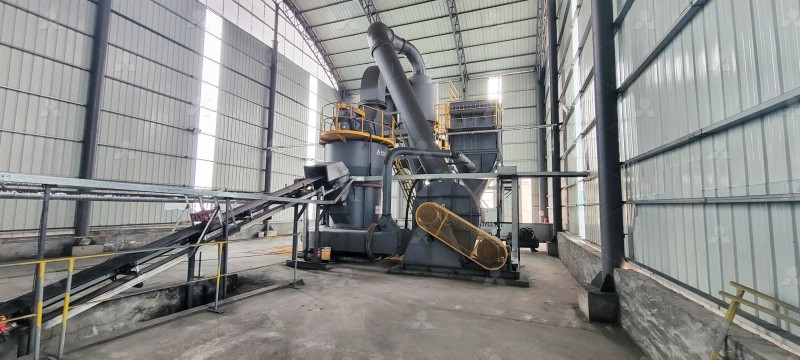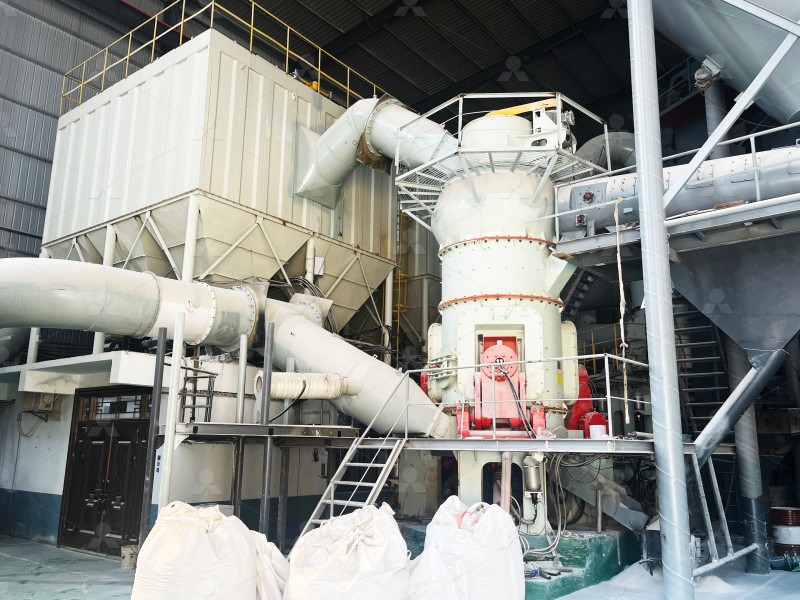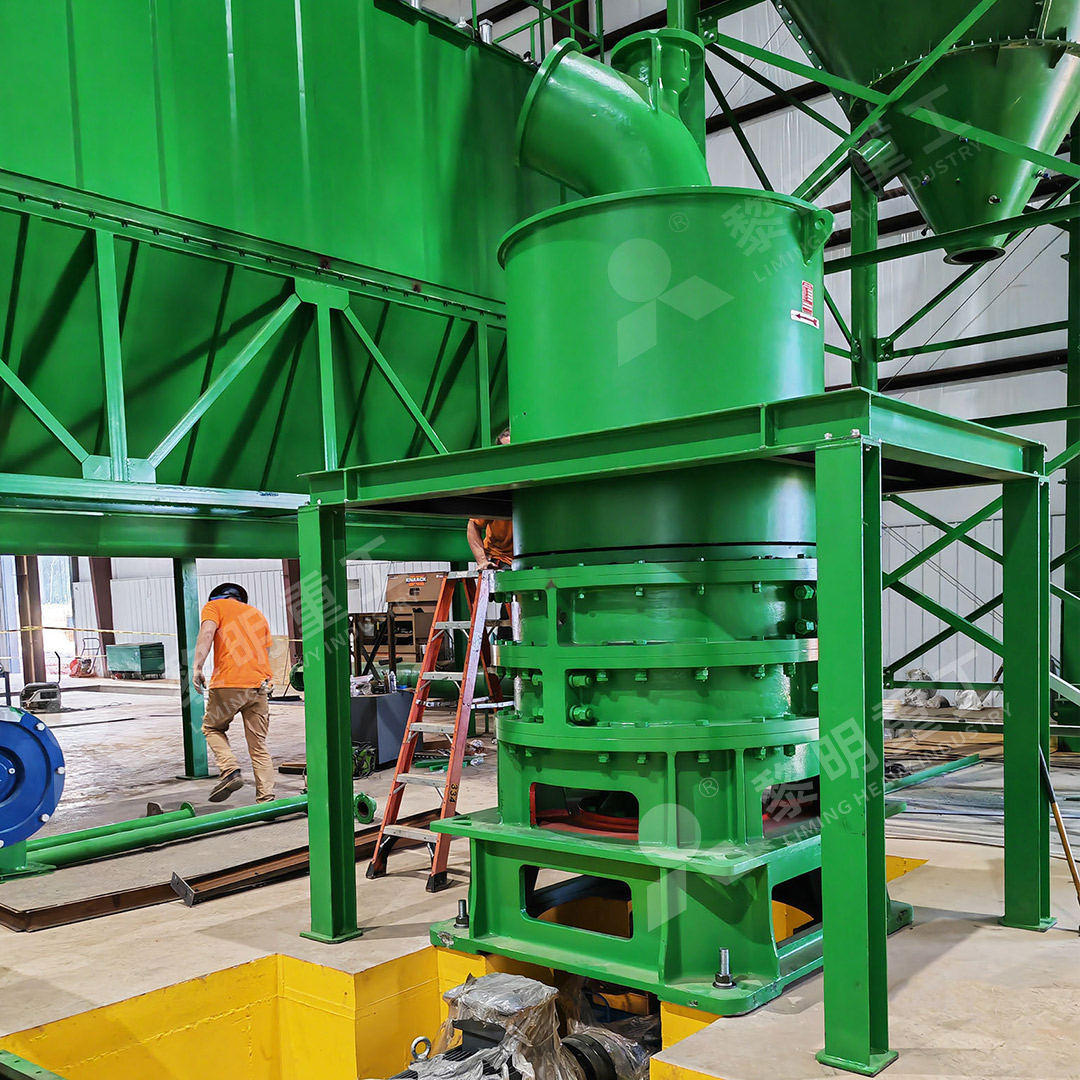Limestone Grinding Mill for Flue Gas Desulfurization: 180 Mesh, 5 TPH Capacity and Vertical Mill Investment Cost
Optimizing Flue Gas Desulfurization with Advanced Limestone Grinding Technology
In the critical field of flue gas desulfurization (FGD), achieving consistent production of high-purity limestone powder at 180 mesh fineness and 5 tons per hour capacity presents significant technical challenges. The selection of appropriate grinding equipment directly impacts desulfurization efficiency, operational costs, and environmental compliance. Traditional grinding solutions often struggle to balance production requirements with energy consumption and maintenance demands.

The FGD process depends heavily on the reactive surface area of limestone particles, where 180 mesh fineness represents the optimal balance between reaction kinetics and grinding economics. At this specification, the limestone powder provides sufficient surface area for efficient sulfur dioxide capture while maintaining reasonable production costs. The 5 TPH capacity requirement typically serves medium-scale industrial plants and power generation facilities with moderate emission profiles.
Vertical Mill Technology: The Modern Solution for FGD Applications
Among contemporary grinding solutions, vertical roller mills have emerged as the preferred technology for FGD limestone preparation. Their advantages stem from integrated drying, grinding, and classification capabilities within a single compact unit. The vertical orientation naturally facilitates efficient material transport and optimized particle size distribution control.
For operations requiring 180 mesh fineness at 5 TPH capacity, we particularly recommend our LUM Ultrafine Vertical Grinding Mill. This advanced system incorporates German powder separating technology and Taiwanese grinding roller innovations to deliver exceptional performance specifically for FGD applications. With an input size capability of 0-10 mm and capacity range of 5-18 TPH, it perfectly matches the specified production requirements while providing operational flexibility.

Investment Considerations and Operational Economics
The capital investment for vertical mill systems varies significantly based on configuration, auxiliary equipment, and installation requirements. For a complete 5 TPH system producing 180 mesh limestone powder, operators should anticipate investment ranging from $500,000 to $800,000, depending on specific site conditions and automation levels.
Operational economics reveal the true advantage of vertical mill technology. Compared to traditional ball mills, vertical systems typically reduce energy consumption by 30-40% while occupying approximately 50% less floor space. The LUM series specifically achieves these savings through its multi-head powder separating technology and optimized grinding curve design, which enables precise control over particle size distribution with minimal energy input.
Maintenance costs represent another critical factor in total ownership expense. The LUM mill’s reversible structure allows easy access to grinding components, while the absence of rolling bearings in the grinding chamber eliminates a common failure point. These design features collectively reduce maintenance downtime and extend operational periods between servicing.
Environmental Compliance and System Integration
Modern FGD grinding systems must address environmental concerns beyond sulfur dioxide capture. Dust emissions, noise pollution, and energy efficiency all factor into regulatory compliance and community acceptance. The integrated pulse dust collection systems in advanced vertical mills maintain dust concentration below 20 mg/Nm³, comfortably exceeding most environmental standards.
For operations requiring even finer control or processing of alternative materials, our MW Ultrafine Grinding Mill provides an excellent complementary solution. With adjustable fineness between 325-2500 meshes and capacity up to 25 TPH, this system offers remarkable flexibility for facilities that process multiple mineral types or require product diversification.

Frequently Asked Questions
What makes vertical mills particularly suitable for FGD limestone grinding?
Vertical mills integrate multiple processes into a single unit, providing superior energy efficiency, compact footprint, and excellent particle size control specifically needed for consistent FGD reagent quality.
How does the 180 mesh specification impact desulfurization efficiency?
180 mesh represents the optimal balance where particles provide sufficient surface area for rapid SO2 absorption while remaining large enough to avoid excessive energy consumption during grinding and potential handling issues.
What auxiliary equipment is typically required with a 5 TPH vertical mill system?
A complete system includes jaw crusher for preliminary size reduction, bucket elevator, vibrating feeder, pulse dust collector, electrical control system, and potentially drying equipment if raw material moisture exceeds 10%.
How does the LUM Ultrafine Vertical Grinding Mill achieve lower energy consumption?
Through its unique roller shell design, efficient powder separation technology, and optimized grinding pressure control, the LUM mill reduces energy consumption by 30-50% compared to conventional grinding systems.
What maintenance intervals can operators expect with modern vertical mills?
With proper operation and maintenance, grinding rollers typically require inspection every 2,000-4,000 hours, while major overhauls may be scheduled at 16,000-24,000 hour intervals depending on material abrasiveness.
